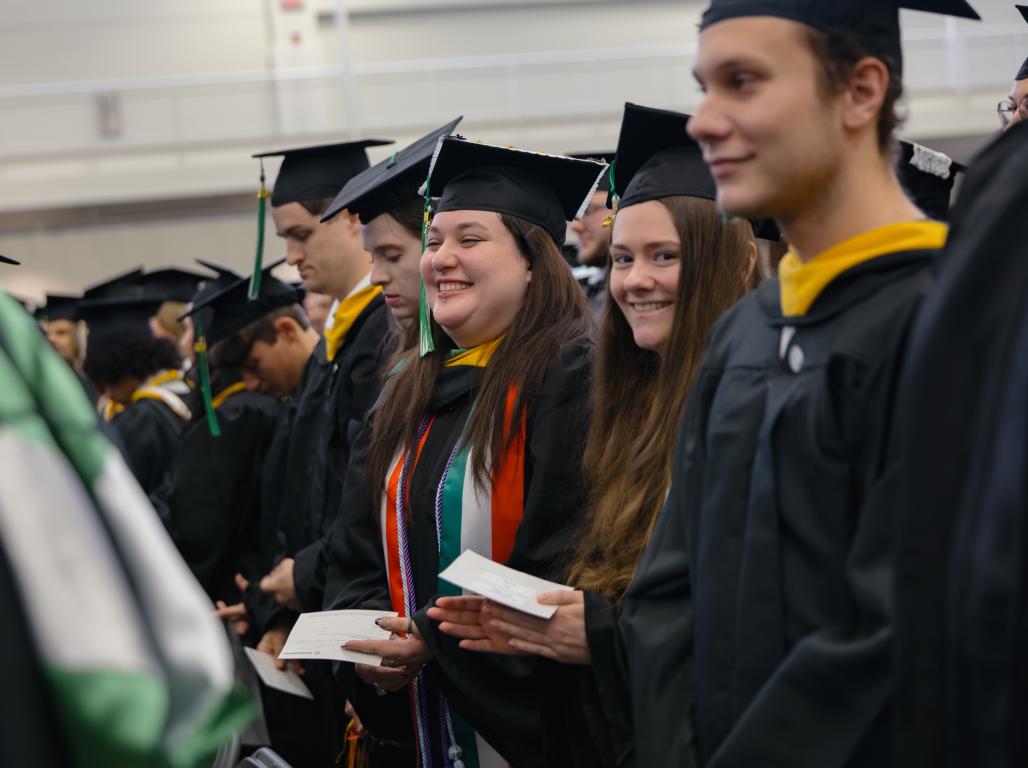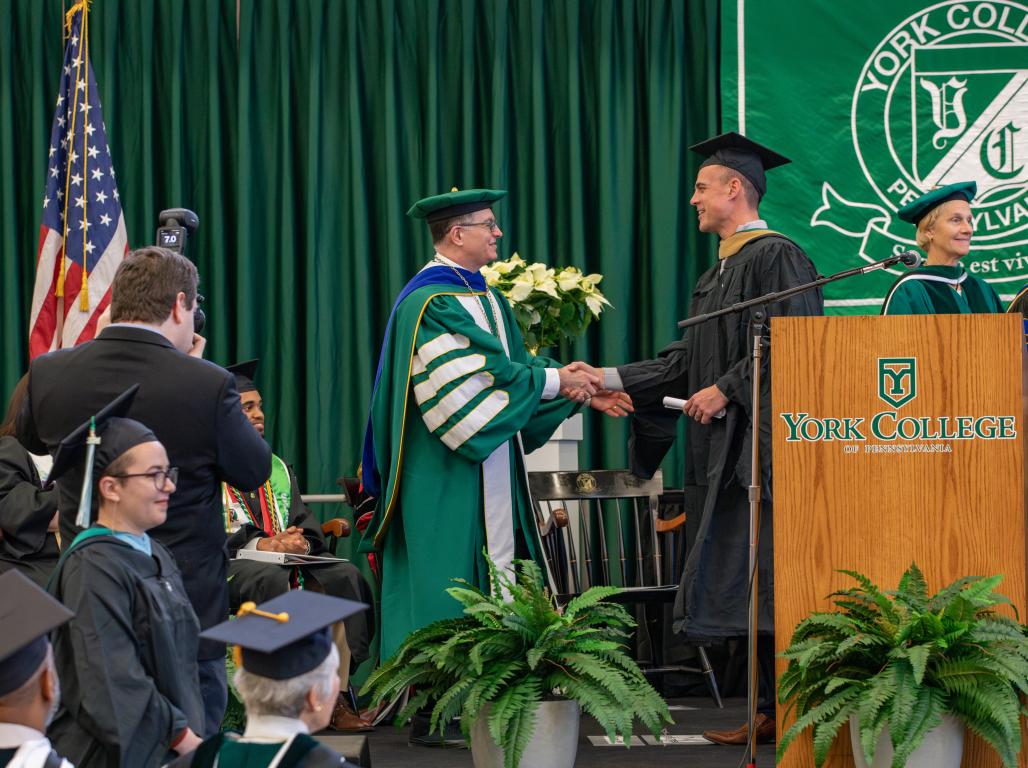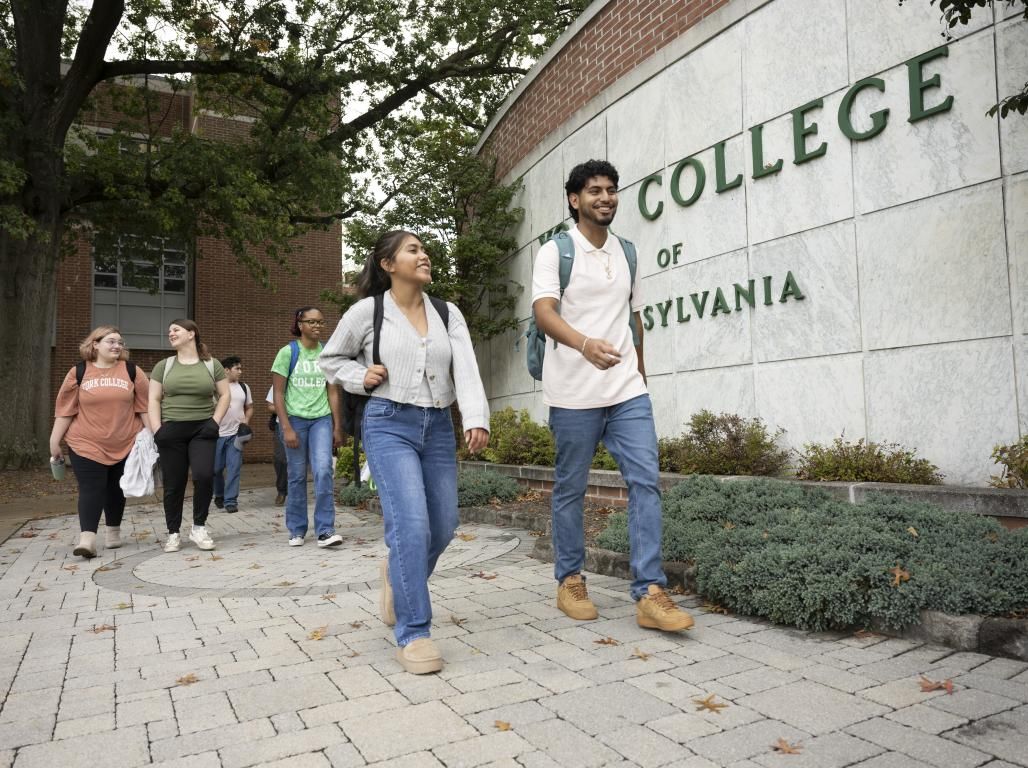Foreign Language and Hospitality Students Curate an Interdisciplinary Dining Experience

York College of Pennsylvania students collaborated to transform cultural research and classroom learning into an immersive, shared culinary event.
Guests who came to the Gunter-Smith Center for Community Engagement for a Spanish-themed collaborative dinner in late October experienced far more than a meal. They stepped into a living classroom where language, culture, literature, hospitality, and teamwork blended into a broad educational experience.
The dinner was one segment of a partnership between York College of Pennsylvania’s Spanish program and the Hospitality and Tourism Management program. Led by José Luis de Ramón Ruiz, Ph.D., Assistant Professor of Literature and Language; and Joseph Scarcelli, Ph.D., Associate Professor of Hospitality and Tourism Management, the collaboration paired students in the two majors to conduct research and then prepare and serve a culturally grounded meal.
Understanding culture through food
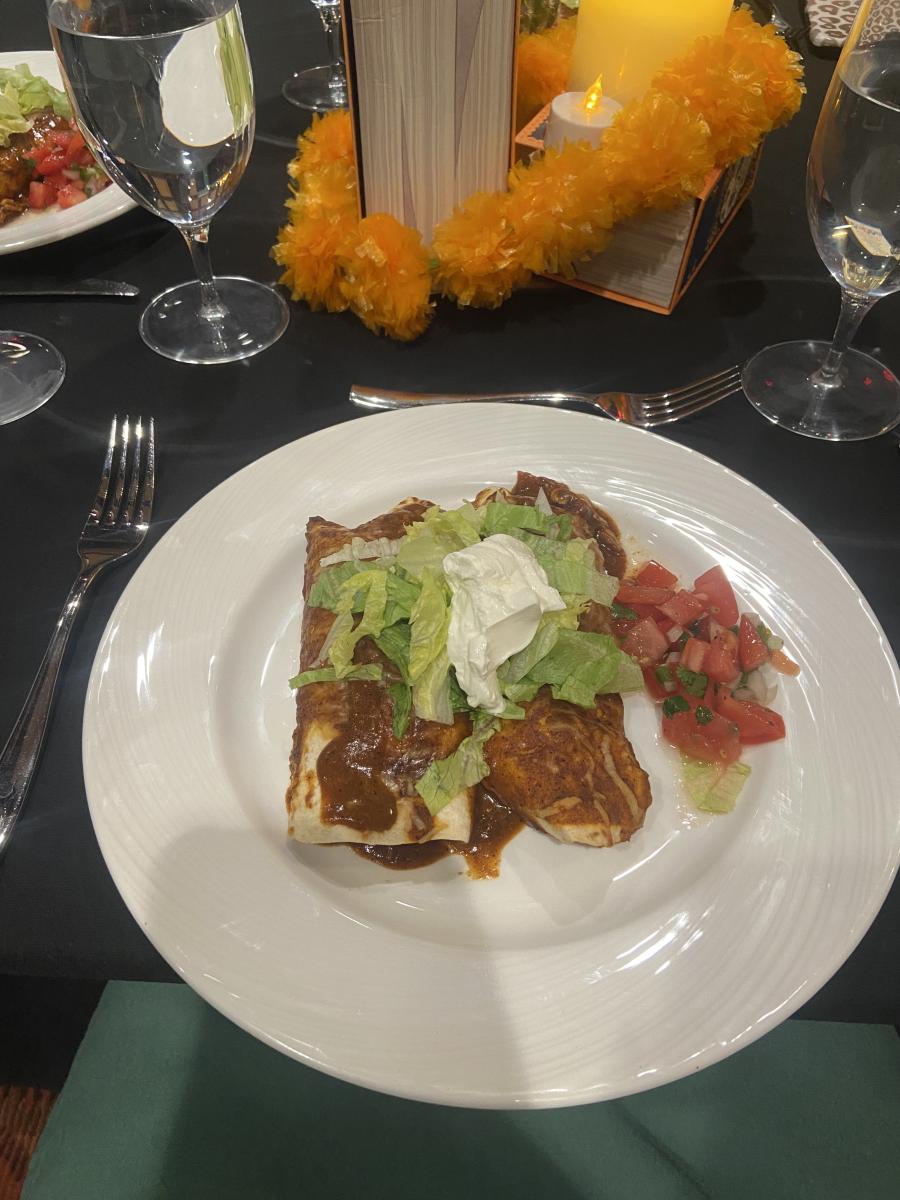
The idea for the dinner grew out of conversations between faculty members looking for ways to integrate cultural immersion into hands-on coursework. Dr. Scarcelli believes that food is one of the most powerful tools for cultural learning, helping to build understanding of a people through the historical context of their foods.
“I tell my students from the first year, having a cultural competency is necessary,” Dr. Scarcelli says. “No matter where you work, people are coming from cultures different from your own. You need to understand their perspective.”
For Dr. Ruiz, the collaboration creates an opportunity for his Spanish students to see how culture manifests itself beyond literature.
His students completed the research portion of the project, gleaning recipes from literary works of Latin American countries and examining the cultural and historical context of those recipes and their ingredients. They then presented that information at the dinner.
Through the books in his courses, Dr. Ruiz aims to emphasize that food isn’t just about sustenance but something that carries cultural values and symbolism.
Hospitality and language learning in action
Dr. Scarcelli’s class of six students approached the dinner with the mindset of event planners. They were responsible for production schedules, staffing, purchasing, timing, and execution. Once they finalized the recipes, they took a head count, planned for overproduction, composed a list of all the ingredients, created a purchase order, and scheduled prep time.
Dr. Ruiz’s students explored dishes from Central America, the Caribbean, and Mexico, linking them to broader cultural themes. Food can also reflect outside influences on a culture. Students researched how ingredients or preparation methods might have originated in other regions, such as Europe or North and South America.
“Sometimes the type of food people eat is a reflection of their heritage, tradition, and the things they value,” Dr. Ruiz says. In literature, food isn’t just a background detail. You can learn a lot about a culture by looking at what characters eat, who they eat with, and the social or cultural context of their meals.”
Students learn by doing
Hospitality major Caraline Junkin ’26 tested recipes, prepared dishes, and helped coordinate plating and service.
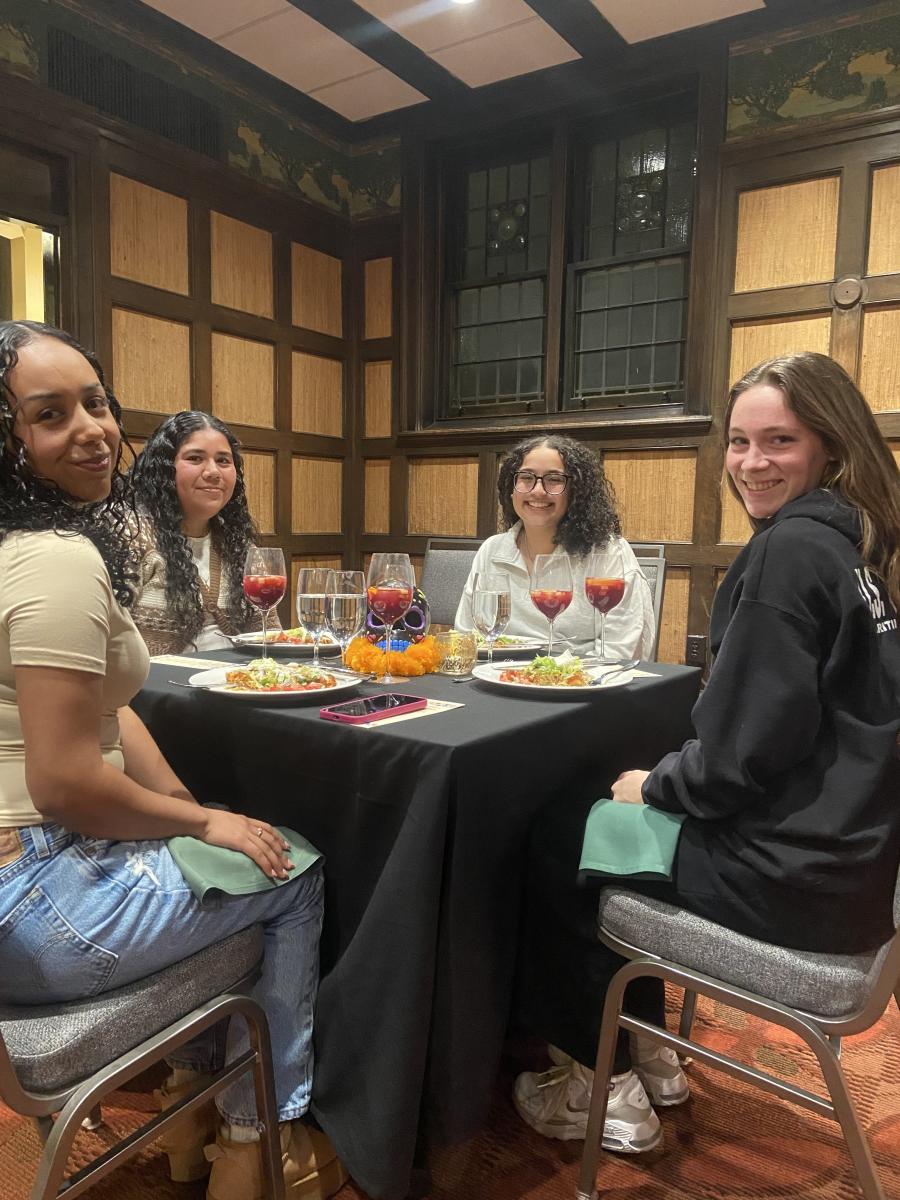
“Through this experience, I saw firsthand how language, culture, and food are deeply connected,” she says. “Food is more than just what we eat; it’s a way to share traditions and experiences across cultures.”
Hospitality major Sammy Villa-Lobos ’26 helped test recipes, design centerpieces, set tables, and serve the dinner. Most meaningful for her was the bond she developed with her classmates as the experience brought course concepts to life.
“This class is a really great opportunity for Hospitality students to pull together knowledge from our classes, work experiences, and practical knowledge and apply it to a real-life service situation,” she says.
Nursing major Kennedy Conte ’27, a student in Dr. Ruiz’s Spanish course, supported her classmates’ presentations and participated in the dinner. She enjoyed witnessing the cultural connections.
“Listening to the presentations of all of the dishes, it made me understand the significance of the traditions and cultures associated with them,” she says.
For both professors, the collaboration has become a powerful teaching model, bringing cultural studies out of the classroom and into a shared space where students must communicate, plan, manage, interpret, and serve together. It’s a joint venture where food serves as the bridge between cultures, a hands-on learning tool, and a common language of hospitality.


